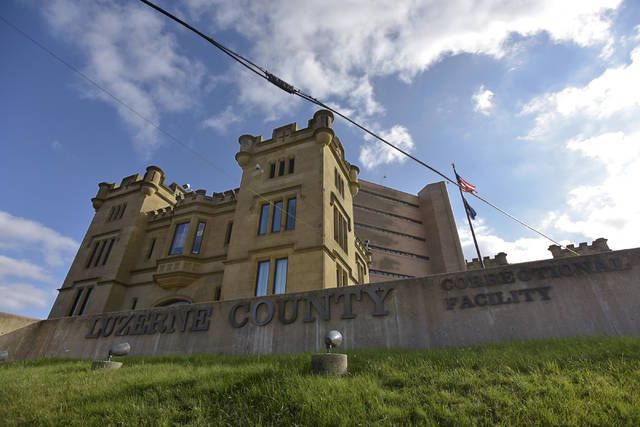Click here to subscribe today or Login.
Three years ago this month, Luzerne County’s correctional facilities in Wilkes-Barre housed an average of 712 inmates — 504 at the Water Street prison and 208 at the minimal offenders building on Reichard Street.
This February, the average total count has been 602, a decrease of 110 or roughly 15 percent, new statistics show. The breakdown: 443 at the prison and 159 in the minimal offenders building.
County Manager C. David Pedri touted the shrinking population during his recent “state of the county” report, crediting multiple departments and the leadership of Mark Rockovich, who was promoted as county correctional services division head in July 2016.
“That is a huge savings to Luzerne County. That is a safety savings to Luzerne County. That is a huge accomplishment on director Rockovich’s part,” Pedri said in the presentation at last week’s county council meeting.
Overcrowding task force
Calling prison overcrowding a “major concern,” Pedri had formed a task force with representatives of multiple county departments to address the problem in September 2016. The move stemmed in part from safety concerns raised in the July 2016 deaths of correctional officer Kristopher Moules, 25, and inmate Timothy Darnell Gilliam Jr., 27, in a prison elevator shaft.
Around the time the task force was set up, court officials advanced their plan to reduce the prison population and speed up the processing of criminal court cases by creating a central court, which was implemented in October 2017.
With central court, most criminal proceedings are heard at a building next to the Water Street prison in Wilkes-Barre instead of magisterial offices.
Officials say the central processing of magisterial-level criminal cases has streamlined scheduling and provided immediate access to all parties involved in the criminal justice system, including representatives of drug court and other diversionary programs.
County Court of Common Pleas President Judge Richard Hughes said central court is a major contributor to the reduction.
“We determined some time ago the prison was statistically upside down, having more people awaiting trial than serving sentences,” Hughes said.
Back then, prison officials said between 75 and 80 percent of county inmates were awaiting adjudication, as opposed to a national average of 30 percent.
Hughes said one recent study projected 55 percent of county inmates are now awaiting adjudication, although he believes it is lower than that.
While he describes the progress as “total success,” Hughes said officials cannot “claim victory” and will continue to pursue efforts to further reduce the percentage.
“We have seen terrific results,” Hughes said, describing Rockovich as a “progressive guy.”
“It’s a classic case where I think two branches of government working together can make real effective change.”
Specialty courts a factor
More uniform bail and the fast-tracking of DUI cases and entry into drug and mental health courts also have created prison breathing room.
“These specialty courts recognize a prison is not a place — and never was intended to be a place — to treat mental illness and drug addiction,” Hughes said.
In addition to central court, Rockovich attributed the population decline to swift transporting of inmates who must be shipped to state prisons or other facilities, and continued use of a day reporting center that kept an average of 88 inmates out of the county prison system this month.
“It’s cooperation of all agencies working together for one goal,” Rockovich said.
The county Public Defender’s Office also has initiated a project with the New York City-based Vera Institute of Justice to study the prison jail population to try to reduce it, Pedri’s presentation said.
The prison was designed to hold up to 505 inmates. The decline has allowed Rockovich to free up a second floor to house a rising number of female inmates, a trend largely due to the opioid epidemic.
Officials have said the county saves money from the absence of inmates who would have to be fed and may require doctor visits, mental health treatment and medication.
However, the correctional services division is still the county’s top budgetary expense — $28.39 million in 2019. Officials have said the prison requires higher maintenance and staffing because it is aging and has an antiquated, multi-story layout.





